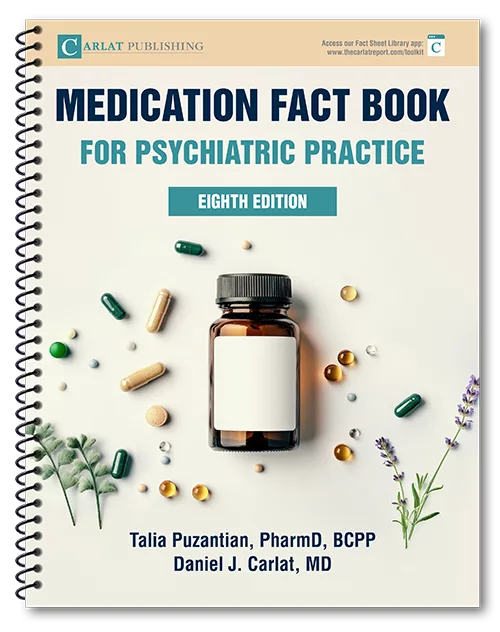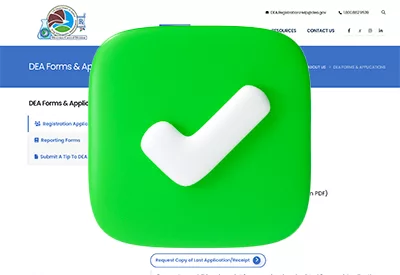Home » Neuroanatomy: A Very Short Course
Neuroanatomy: A Very Short Course
June 1, 2004
From The Carlat Psychiatry Report
Daniel Carlat, MD
Dr. Carlat has disclosed that he has no significant relationships with or financial interests in any commercial companies pertaining to this educational activity.
Five of the last six covers of the American Journal of Psychiatry have been chock-full of brains. We have learned from these issues that depressed patients have lower hippocampal volumes (Am J Psychiatry 2004 161: 598-607), that schizophrenics have "a pattern of prefrontal cortex underactivation and parahippocampal overactivation" when recognizing words (Am J Psychiatry 2004 161: 1004-1015), and that long term abstinence from methamphetamine abuse normalizes metabolism in the thalamus but not in the striatum or nucleus accumbens (Am J Psychiatry 2004 161: 242-248).
While these articles are of dubious clinical relevance for practicing psychiatrists, they do have the effect making us feel inferior to neurologists and the small cadre of academic psychiatric researchers who actually understand this stuff. And that may be a good thing, because it motivates us to bone up on our neuroanatomy, knowledge that impresses our patients as we try to convince them to take their meds.
What follows is a very basic neuroanatomy course for psychiatrists.
Weighing in at about 3 pounds, we all have brains, which are composed of the forebrain (two hemispheres, four lobes, and subcortical structures--more details below), the midbrain (part of the brainstem-- cranial nerves, substantia nigra for dopamine, and the raphe nucleus for serotonin), and the hindbrain (the pons and cerebellum--cranial nerves and balance and the locus coeruleus for norepinephrine). The forebrain is where most of the action is in psychiatry, so we'll focus on that. It's covered by a 4 mm layer of cortex that is composed of nerve cell bodies, also known as gray matter. Axons connect to the interior from the cortex; they are covered with a white fatty myelin sheath, and make up the white matter. The cortex is very wrinkled in order to fit our billions of neurons into a small skull; if ironed out, it would cover a king-sized bed. Don't try that at home.
The folds of the cortex are gyri and the creases are sulci. The central sulcus is a nice landmark, as it separates the fontal lobe from the parietal lobe. The strip of cortex in front of the central sulcus is the motor strip (remember the motor homunculus with the giant hand?) and the strip behind it is the somatosensory strip.
Now, to lobes. Lobes are big chunks of brain, and are somewhat arbitrary ways of dividing something very complicated into four regions. The frontal lobe is the neuro-superego. The "frontal cortex" is not the same as the "frontal lobe," rather, it just refers to the gray matter covering of the lobe. The prefrontal cortex is the most forward part of the frontal cortex; prefrontal lobotomies (no longer done) and prefrontal strokes cause a variety of frontal lobe syndromes, such as disinhibition, inappropriate behavior, and apathy.
If you read too many psychiatric journal articles, you will come across confusing terms denoting various parts of the frontal cortex, including "orbital gyrus" (a fold of the FL above the eyes) and "cingulate gyrus" (a fold tucked away in the medial part of the FL).
The temporal lobe is an overachieving lobe and as a consequence is always mentioned. The famous Wernicke's area (receptive aphasia) area is on the cortex, and tucked deep in the medial temporal lobe is the limbic system (LS). The LS is particularly confusing because researchers find another brain structure connected to it yearly, so it's quite the moving target to learn. It's the emotional circuit, and it includes the amygdala, the hippocampus, the mammilary bodies, the thalamus, the parahippocampal gyrus (just a fold of temporal cortex next to the hippocampus), and maybe even the frontal lobe’s cingulate and orbital gyri. A threatening stimulus is first perceived by our senses, then gets transmitted to the thalamus (our sensory switchboard), then on to the amygdala, which judges the degree of danger and can send a quick message to the motor strip to MOVE. The amygdala is conveniently located next the memory-rich hippocampus, allowing for quick scanning of the memory banks to assess degree of danger.
Ah, the basal ganglia. It's mostly for control of movement, but it gets involved in emotions too. It comprises the striatum (the caudate plus putamen), the globus pallidus, and the nucleus accumbens. It gets degenerated in Parkinson's disease, and it's famous for causing EPS (extrapyramidal symptoms) as a result of over-exuberant dopamine blockade from antipsychotics.
Oh--almost forgot the parietal lobe, good for fine-tuned sensation, and the occipital lobe, great for vision.
Phew! Done. Simplistic? Sure. But I’m no brain surgeon!
General PsychiatryWhile these articles are of dubious clinical relevance for practicing psychiatrists, they do have the effect making us feel inferior to neurologists and the small cadre of academic psychiatric researchers who actually understand this stuff. And that may be a good thing, because it motivates us to bone up on our neuroanatomy, knowledge that impresses our patients as we try to convince them to take their meds.
What follows is a very basic neuroanatomy course for psychiatrists.
Weighing in at about 3 pounds, we all have brains, which are composed of the forebrain (two hemispheres, four lobes, and subcortical structures--more details below), the midbrain (part of the brainstem-- cranial nerves, substantia nigra for dopamine, and the raphe nucleus for serotonin), and the hindbrain (the pons and cerebellum--cranial nerves and balance and the locus coeruleus for norepinephrine). The forebrain is where most of the action is in psychiatry, so we'll focus on that. It's covered by a 4 mm layer of cortex that is composed of nerve cell bodies, also known as gray matter. Axons connect to the interior from the cortex; they are covered with a white fatty myelin sheath, and make up the white matter. The cortex is very wrinkled in order to fit our billions of neurons into a small skull; if ironed out, it would cover a king-sized bed. Don't try that at home.
The folds of the cortex are gyri and the creases are sulci. The central sulcus is a nice landmark, as it separates the fontal lobe from the parietal lobe. The strip of cortex in front of the central sulcus is the motor strip (remember the motor homunculus with the giant hand?) and the strip behind it is the somatosensory strip.
Now, to lobes. Lobes are big chunks of brain, and are somewhat arbitrary ways of dividing something very complicated into four regions. The frontal lobe is the neuro-superego. The "frontal cortex" is not the same as the "frontal lobe," rather, it just refers to the gray matter covering of the lobe. The prefrontal cortex is the most forward part of the frontal cortex; prefrontal lobotomies (no longer done) and prefrontal strokes cause a variety of frontal lobe syndromes, such as disinhibition, inappropriate behavior, and apathy.
If you read too many psychiatric journal articles, you will come across confusing terms denoting various parts of the frontal cortex, including "orbital gyrus" (a fold of the FL above the eyes) and "cingulate gyrus" (a fold tucked away in the medial part of the FL).
The temporal lobe is an overachieving lobe and as a consequence is always mentioned. The famous Wernicke's area (receptive aphasia) area is on the cortex, and tucked deep in the medial temporal lobe is the limbic system (LS). The LS is particularly confusing because researchers find another brain structure connected to it yearly, so it's quite the moving target to learn. It's the emotional circuit, and it includes the amygdala, the hippocampus, the mammilary bodies, the thalamus, the parahippocampal gyrus (just a fold of temporal cortex next to the hippocampus), and maybe even the frontal lobe’s cingulate and orbital gyri. A threatening stimulus is first perceived by our senses, then gets transmitted to the thalamus (our sensory switchboard), then on to the amygdala, which judges the degree of danger and can send a quick message to the motor strip to MOVE. The amygdala is conveniently located next the memory-rich hippocampus, allowing for quick scanning of the memory banks to assess degree of danger.
Ah, the basal ganglia. It's mostly for control of movement, but it gets involved in emotions too. It comprises the striatum (the caudate plus putamen), the globus pallidus, and the nucleus accumbens. It gets degenerated in Parkinson's disease, and it's famous for causing EPS (extrapyramidal symptoms) as a result of over-exuberant dopamine blockade from antipsychotics.
Oh--almost forgot the parietal lobe, good for fine-tuned sensation, and the occipital lobe, great for vision.
Phew! Done. Simplistic? Sure. But I’m no brain surgeon!

Issue Date: June 1, 2004
Table Of Contents
Recommended
Newsletters
Please see our Terms and Conditions, Privacy Policy, Subscription Agreement, Use of Cookies, and Hardware/Software Requirements to view our website.
© 2025 Carlat Publishing, LLC and Affiliates, All Rights Reserved.


_-The-Breakthrough-Antipsychotic-That-Could-Change-Everything.webp?t=1729528747)



